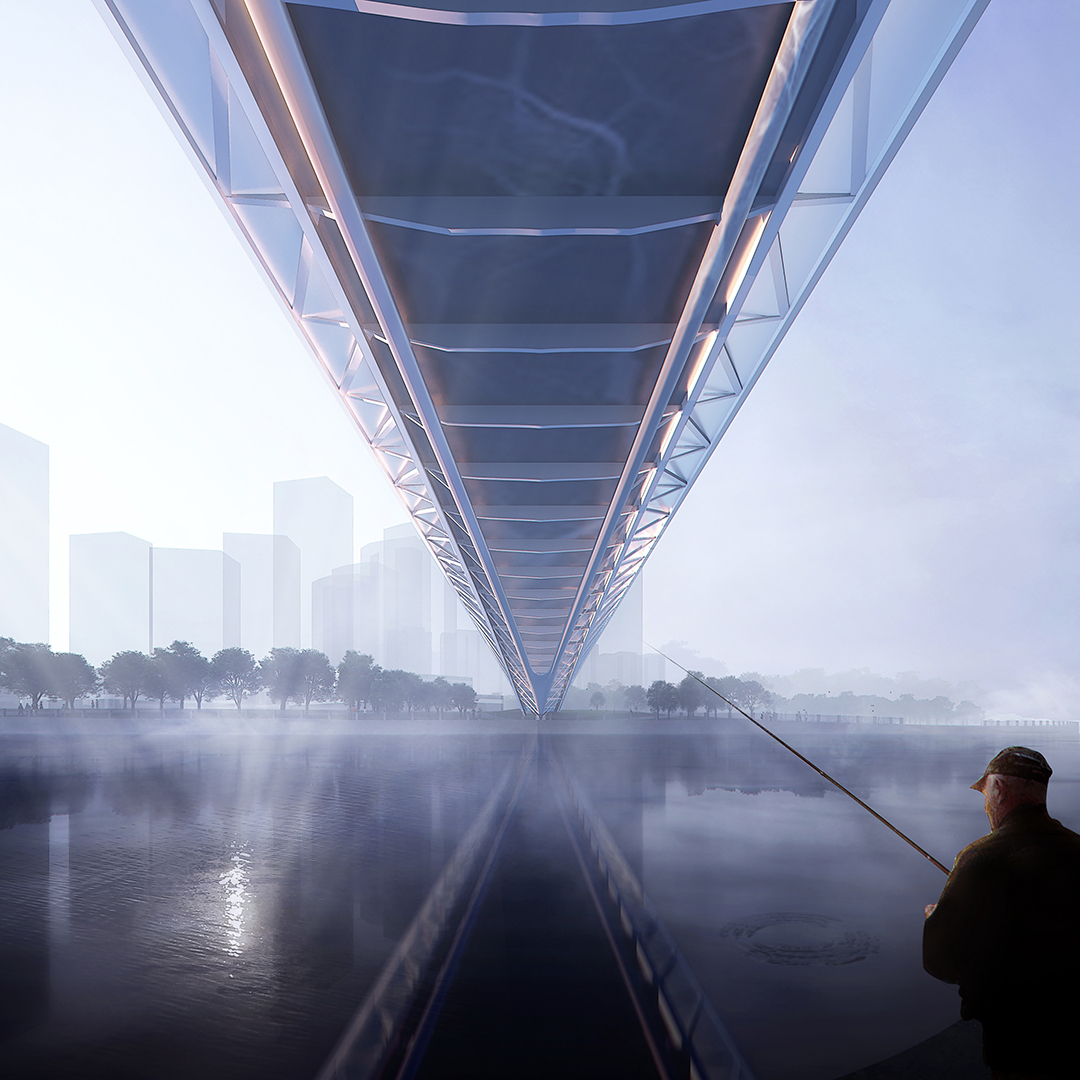Honorable Mention of the International Architecture & Design Awards 2023
Architect / Designer:
MLA+
Studio:
Cundall
Design Team:
Engineer
Cundall: Dong Chen, Nan Li, Emil Svantesson
Architects
MLA+: Ruixin Chen, Di Chen, Meiqi Lv, Ruizhi Cao, Cheng Shi
Copyright:
MLA+
Country:
China
Our design proposal was submitted as an entry for an international competition to develop the conceptual design of Yingbin Pedestrian Bridge.
Located in the northwest of the central area of Dongguan City, Yingbin Pedestrian Bridge is planned to be a landmark sightseeing pedestrian bridge that connects the waterfronts across Dongguan Waterway. It is envisioned to be the first cross-river sightseeing pedestrian bridge in the riverside area.
The design was influenced by the dragon boat culture in Dongguan. The people of Dongguan, who reside near the water, have a long-standing custom of dragon boat paddling and a traditional technique of crafting dragon boats that has endured for a century. Inspired by the willow leaf, the structure captures the robust framework and sleek lines of a dragon boat, while the cloud bridge gracefully spans across the river surface.
The bridge structure has been assessed against fundamental structural stability and design criteria to verify its strength and service performance.
The proposed design scheme involves a bridge with a maximum clear span of 178m. The primary structure consists of two main longitudinal arches that also constitute the bottom chord of a truss that supports and stabilises the upper viewing deck. The vertical members of the truss are rigidly connected to tapered transversal beams that support the upper deck.
The lateral stability system relies on diaphragm action of the deck to transfer loads to the arch, resulting in a push-pull effect. It resists torsional forces by the U-shaped cross section of the bridge. Supports are pinned for simpler connection detail and forces are largely limited to compression, enabling simpler and more cost-effective foundations to be dimensioned in later design stages.
The design incorporated an environmental analysis to ensure harmony between the pedestrian bridge and the surrounding site, and to reserve adequate space for both short-term and long-term planning of the area.
The design scheme also streamlines the relationship between Yingbin Pedestrian Bridge and neighbouring transport systems including bus and rail transit. This facilitates smooth traffic streams and connection between cross-river traffic, waterfront activities, and other urban functions – achieving the goal of connectivity and convenient transportation.
The design proposal and bridge type were selected through consideration of the distinctive characteristics of the waterside area, its ecological characteristics, historical and cultural resources, and the overall landscape.
As pedestrian bridges tend to be susceptible to human induced vibration, the dynamic performance associated with the pedestrian comfort level was assessed at a high-level using acceleration experienced by a user as a measure of comfort.
The people-oriented design approach ensures the design solution addresses goals of meeting the needs of diverse groups of people for living, working and playing in the area, by creating a pedestrian-friendly urban environment that provides an immersive landscape experience and high-quality facilities.
The result is a unique and innovative bridge design that captures the local culture and essence of the riverside area, while incorporating modern design techniques, reflecting a new era while preserving the traditional charm of Dongguan City.
Cundall
Founded in 1976, Cundall is an international multi-disciplinary engineering consultancy with 24 offices across the globe. We create fantastic built environments, transform communities, and provide great opportunities for our people.
With sustainability at the heart of everything we do, we integrate environmental considerations into our design, encompassing everything from transport and energy use, to how people will use buildings. By embracing a fresh approach to design, our engineers consistently deliver award-winning buildings that embody sustainability and innovative thinking.
We strive for excellence and continuously foster creativity, collaboration, and expertise to deliver world-class solutions while maintaining strong ties with local communities.



